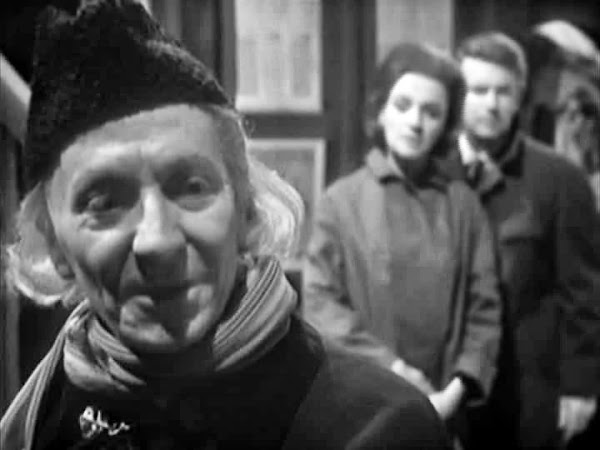Embarking on a journey through time and space, I’ve set myself an ambitious yet thrilling task: to rewatch 365 Doctor Who adventures in a single year and document the experience. Yes, I've watched them all before, many of them several times, but never in consecutive order. So, starting with the black-and-white beginnings of 1963 to the vibrant worlds of the modern era, this retrospective aims to rediscover the magic, examine the show's evolving themes, and critique its enduring legacy.
Now, you might be thinking 'ah, but there are only 312 Doctor Who TV adventures' (as of January 1st 2025), but do not fear, we have plans...
Each adventure will be viewed with a critical eye, considering it resonates from a contemporary perspective while appreciating its original context. I hope this journey celebrates Doctor Who as a cultural touchstone, offering insights into its transformation across decades of storytelling.
"An Unearthly Child," the inaugural serial of Doctor Who, first broadcast in November 1963, introduces audiences to the enigmatic Doctor, his granddaughter Susan, and her inquisitive teachers, Ian and Barbara. This four-part adventure lays the foundation for what would become a cornerstone of British science fiction television.
Episode Breakdown
The serial opens with "An Unearthly Child," focusing on Susan Foreman, a peculiar student at Coal Hill School. Her teachers, Ian Chesterton and Barbara Wright, intrigued by her unorthodox knowledge and behaviour, follow her to a junkyard at 76 Totter's Lane. There, they encounter the Doctor and discover the TARDIS, a time machine disguised as a police box. Their unplanned journey transports them to the Palaeolithic era, where the subsequent episodes—"The Cave of Skulls," "The Forest of Fear," and "The Firemaker"—centre on a tribe of early humans struggling to rediscover the secret of fire.
Character Introductions
William Hartnell's portrayal of the Doctor is initially that of a mysterious and somewhat irascible figure, markedly different from the more benevolent character he would evolve into. His interactions are often curt, reflecting a distrust of outsiders. Susan, played by Carole Ann Ford, exhibits an otherworldly demeanour, though her characterisation at times borders on erratic, a point critiqued in contemporary reviews. Ian (William Russell) and Barbara (Jacqueline Hill) serve as the audience's surrogate, their scepticism and eventual awe mirroring the viewer's journey into the unknown.
Production and Direction
Directed by Waris Hussein, the first episode is lauded for its atmospheric tension and innovative use of limited sets and effects. The initial TARDIS interior reveal, with its stark contrast to the exterior, remains a seminal moment in television history. However, the subsequent prehistoric episodes have been critiqued for their slower pacing and less engaging narrative, and its hard not to agree with that when rewatching today, and the portrayal of the cavemen absolutely lack depth and dynamism.
Cultural Context and Reception
Airing the day after the assassination of President John F. Kennedy, the debut faced challenges in garnering immediate attention. Initial viewership was modest, prompting a repeat broadcast of the first episode. Retrospective reviews often highlight the strength of the premiere episode but suggest that the following three-part caveman storyline did not maintain the same level of intrigue or excitement.
Critical Analysis from a Modern Perspective
Viewed through a contemporary lens, "An Unearthly Child" serves as a fascinating study in the evolution of television storytelling. The inaugural episode effectively establishes a sense of mystery and wonder, with the TARDIS reveal encapsulating the show's inventive spirit. However, the transition to the prehistoric setting may feel disjointed to modern audiences, with the narrative's shift potentially perceived as a departure from the initial intrigue.
The character dynamics also reflect the era's storytelling conventions. The Doctor's initial abrasiveness contrasts sharply with the more empathetic portrayals in later years, indicating an evolution in character development. Susan's characterisation, at times inconsistent, underscores early challenges in writing compelling female characters within the science fiction genre.
Production limitations are evident, yet they highlight the creativity employed to overcome budgetary constraints. The use of fog to obscure the junkyard set and the minimalist design of the TARDIS interior demonstrate resourceful solutions that have become iconic within the series' lore.
Legacy and Influence
Despite its imperfections, "An Unearthly Child" is pivotal in establishing the core elements of Doctor Who: time travel, the enigmatic nature of the Doctor, and the inclusion of companions who provide a human perspective. The serial's blend of educational content with adventure set a precedent for the show's format, aiming to both entertain and inform.
The serial's impact is further evidenced by its continued discussion among fans and scholars. It has been analysed for its narrative structure, character development, and production techniques, offering insights into early 1960s television production and the nascent stages of a series that would become a cultural phenomenon.
Conclusion
"An Unearthly Child" remains a significant piece of television history, offering insight into the origins of a series that has captivated audiences for decades. While certain aspects appear dated today, the serial's ambition and creativity has to be appreciated. Better viewed as its first episode alone, which sets the scene so admirably for what was to come for the next 60 (60!) years, its legacy endures, not only as the genesis of Doctor Who but also as a testament to the innovative spirit of early science fiction television.


























No comments:
Post a Comment